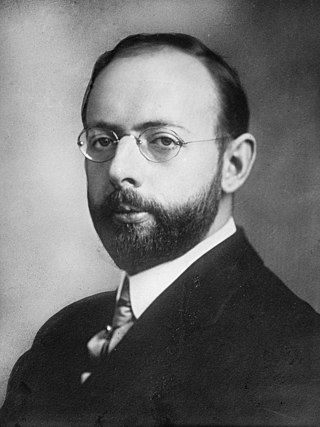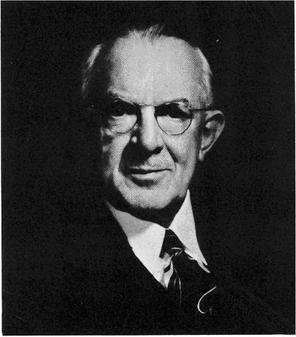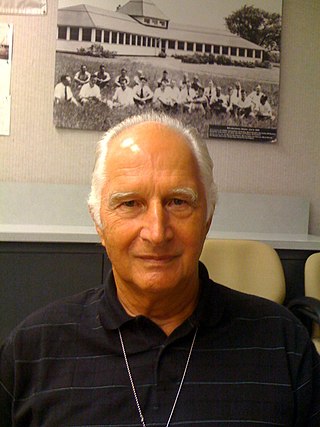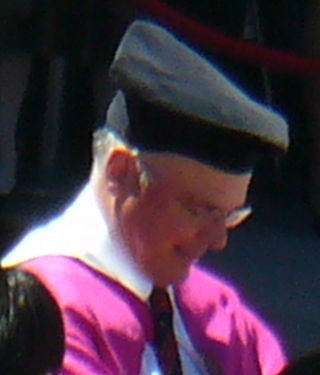Related Research Articles
Optica, founded as the Optical Society of America, is a professional society of individuals and companies with an interest in optics and photonics. It publishes journals, organizes conferences and exhibitions, and carries out charitable activities.
Rudolf Kingslake was an English academic, lens designer, and engineer.

Herbert Eugene Ives was a scientist and engineer who headed the development of facsimile and television systems at AT&T in the first half of the twentieth century. He is best known for the 1938 Ives–Stilwell experiment, which provided direct confirmation of special relativity's time dilation, although Ives himself did not accept special relativity, and argued instead for an alternative interpretation of the experimental results. Ives has been described as "the most authoritative opponent of relativity in United States between the late 1930s and the early 1950s."

Hermann Anton Haus was an Austrian-American physicist, electrical engineer, and Institute Professor at the Massachusetts Institute of Technology. Haus' research and teaching ranged from fundamental investigations of quantum uncertainty as manifested in optical communications to the practical generation of ultra-short optical pulses. In 1994, the Optical Society of America recognized Dr. Haus' contributions with its Frederic Ives Medal, the society's highest award. He also received OSA's Charles Hard Townes Medal in 1987, and was a Fellow of the society. Haus authored or co-authored eight books, published nearly 300 articles, and presented his work at virtually every major conference and symposium on laser and quantum electronics and quantum optics around the world. He was awarded the National Medal of Science in 1995 and was adopted into RPI's Alumni Hall of Fame in 2007.
Robert Earl Hopkins was president of the Optical Society of America in 1973.
Richard C. Lord (1910–1989) was an American chemist best known for his work in the field of spectroscopy.

Loyd Ancile Jones was an American scientist who worked for Eastman Kodak Company, where he was head of its physics department for many years. During World War I, he was also a major contributor to the development of naval camouflage.
Jean M. Bennett (1930–2008) was the first woman president of The Optical Society in 1986.

Robert Louis Byer is a physicist. He was president of the Optical Society of America in 1994 and of the American Physical Society in 2012.

John Donovan Strong (1905-1992) was an American physicist and astronomer. One of the world's foremost optical scientists of his day, Strong was known for being the first to detect water vapor in the atmosphere of Venus and for developing a number of innovations in optical devices, ranging from improved telescope mirrors to anti-reflective coatings for optical elements and diffraction gratings.
George Russell Harrison was an American physicist.
Arthur Cobb Hardy (1895–1977) was president of the Optical Society of America from 1935-36. He was awarded the Edward Longstreth Medal from the Franklin Institute in 1939 and the Frederic Ives Medal in 1957. He was part of the inaugural class of Fellows of the Optical Society of America in 1959.
Rod C. Alferness was president of The Optical Society in 2008.
G. Michael Morris was president of the Optical Society of America in 2002.
Erich P. Ippen is a principal investigator in the Research Laboratory of Electronics (RLE) at the Massachusetts Institute of Technology (MIT). He holds appointments as the Elihu Thomson Professor of Electrical Engineering Emeritus and Professor of Physics Emeritus. He is one of the leaders of RLE’s Optics and Quantum Electronics Group.

David Jeffery Wineland is an American physicist at the Physical Measurement Laboratory of the National Institute of Standards and Technology (NIST). His most notable contributions include the laser cooling of trapped ions and the use of ions for quantum-computing operations. He received the 2012 Nobel Prize in Physics, jointly with Serge Haroche, for "ground-breaking experimental methods that enable measuring and manipulation of individual quantum systems."
Michael S. Feld was an American physicist, who was best known for his work on quantum optics, and medical applications of lasers.

Herwig Kogelnik is an Austrian-American electrical and optical engineer. He is best known for his fundamental contributions to the developments in laser technology, optoelectronics, photonics and lightwave communications systems. His work over a 40-year career at Bell Labs earned him the Marconi Prize, the IEEE Medal of Honor, the National Medal of Technology and many other awards.
James Clair Wyant was a professor at the College of Optical Sciences at the University of Arizona where he was Director (1999–2005) and Dean (2005–2012). He received a B.S. in physics from Case Western Reserve University and M.S. and Ph.D. in optics from the Institute of Optics at the University of Rochester.

David A. B. Miller is the W. M. Keck Foundation Professor of Electrical Engineering at Stanford University, where he is also a professor of Applied Physics by courtesy. His research interests include the use of optics in switching, interconnection, communications, computing, and sensing systems, physics and applications of quantum well optics and optoelectronics, and fundamental features and limits for optics and nanophotonics in communications and information processing.
References
- ↑ S. Q. Duntley Biography from University of California http://repositories.cdlib.org/cgi/viewcontent.cgi?article=1229&context=sio/arch
- ↑ History of the Scripps Visibility Lab http://www.physics.miami.edu/optics/ken/OtherPapers/A25_VA_OOXVI_2002.pdf
- ↑ "Elected Fellows | Optica". www.optica.org. Retrieved 2024-07-17.
- ↑ Past Presidents of the Optical Society of America http://www.osa.org/aboutosa/leadership/pastpresidents/default.aspx
- ↑ OSA Richardson Medal http://www.osa.org/aboutosa/awards/osaawards/awardsdesc/davidrichardson/default.aspx
- ↑ Frederic Ives Medal http://www.osa.org/aboutosa/awards/osaawards/awardsdesc/ivesquinn/default.aspx